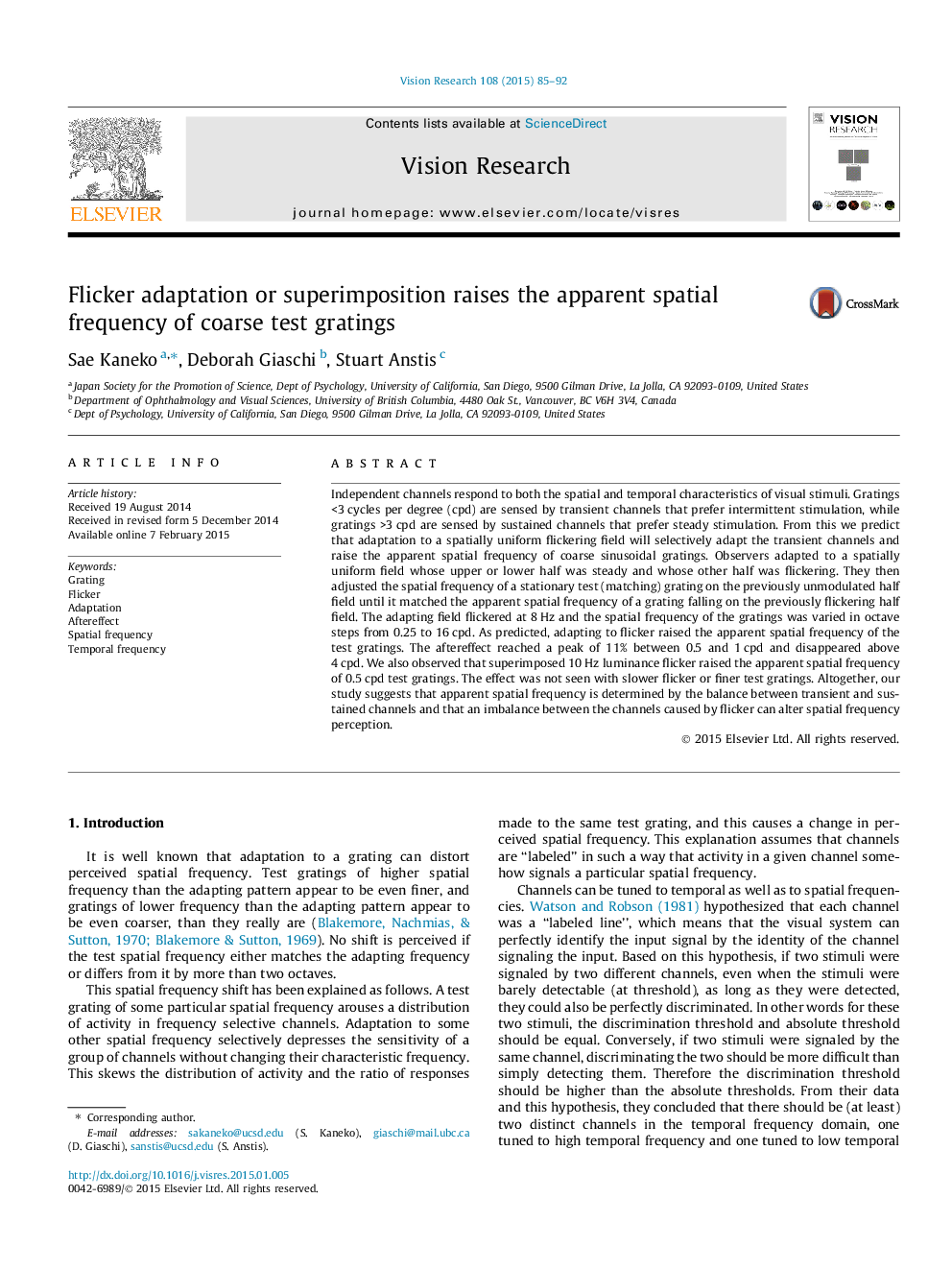| Article ID | Journal | Published Year | Pages | File Type |
|---|---|---|---|---|
| 4033698 | Vision Research | 2015 | 8 Pages |
•Adapting to spatially uniform flicker makes coarse gratings look up to 11% finer.•This purely temporal adaptation gives rise to a purely spatial aftereffect.•Balance between transient and sustained channels codes spatial frequency.
Independent channels respond to both the spatial and temporal characteristics of visual stimuli. Gratings <3 cycles per degree (cpd) are sensed by transient channels that prefer intermittent stimulation, while gratings >3 cpd are sensed by sustained channels that prefer steady stimulation. From this we predict that adaptation to a spatially uniform flickering field will selectively adapt the transient channels and raise the apparent spatial frequency of coarse sinusoidal gratings. Observers adapted to a spatially uniform field whose upper or lower half was steady and whose other half was flickering. They then adjusted the spatial frequency of a stationary test (matching) grating on the previously unmodulated half field until it matched the apparent spatial frequency of a grating falling on the previously flickering half field. The adapting field flickered at 8 Hz and the spatial frequency of the gratings was varied in octave steps from 0.25 to 16 cpd. As predicted, adapting to flicker raised the apparent spatial frequency of the test gratings. The aftereffect reached a peak of 11% between 0.5 and 1 cpd and disappeared above 4 cpd. We also observed that superimposed 10 Hz luminance flicker raised the apparent spatial frequency of 0.5 cpd test gratings. The effect was not seen with slower flicker or finer test gratings. Altogether, our study suggests that apparent spatial frequency is determined by the balance between transient and sustained channels and that an imbalance between the channels caused by flicker can alter spatial frequency perception.
